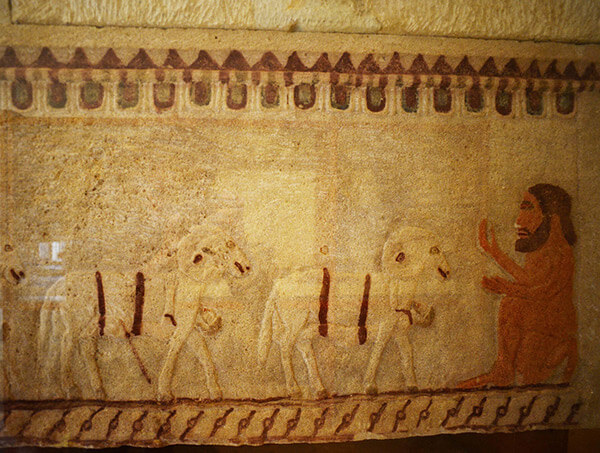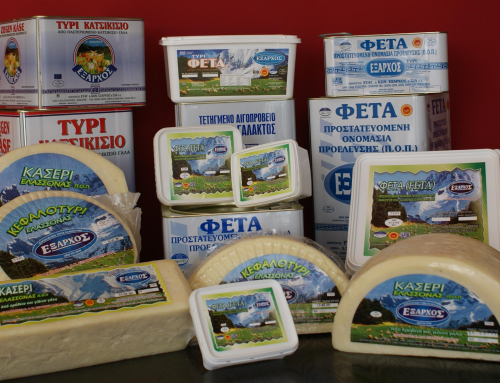Not many foods can boast a history going back over 2000 years, but every time you buy feta you will be eating a cheese as familiar to Homer and Alexander the Great as it is at home in a modern day salad.
Though the name feta is of 17th century origin and refers to the cutting of the cheese, it appears in far more ancient literature. A primitive form of feta is even mentioned in the Odyssey, where the hero Odysseus takes the cheese made by the cyclops Polyphemus whilst escaping from his cave. Today, feta is the flagship of Greece’s geographical indications and accounts for roughly 10% of Greek food exports, a testament to its outstanding international reputation.

“Blinded Cyclops” by orientalizing licenced under CC BY-NC-ND 2.0
Its traditional production methods are linked directly to the specific climatic conditions of the country. With its steep mountainsides and its hot and dry climate, there was little land suitable for widespread cattle rearing. Instead, the Greek people turned to hardy sheep and goats that could thrive in these difficult conditions.
Though this might have made life hard for the ancients, it has given modern consumers cause to celebrate. This is because the particular flavours of feta are only possible when sheep and goats are grazed on the unique flora of Greece. There are over 6000 different species of plants growing in the country, of which 15% are unique, a far higher proportion than many geographically larger nations. This biodiversity, when combined with traditional production methods, is a key reason for why true feta can only be made in Greece.
Source: https://ec.europa.eu/info/food-farming-fisheries/food-safety-and-quality/certification/quality-labels/eu-quality-food-and-drink/feta_en
The company E. & K. EXARHOS Co. operates in the production of milk products at the production plant of our company in Elassona, Larissa. The company produces Feta (PDO) and Kaseri (PDO) and other products such as Myzithra, Kefalotyri and Katsikisio.









